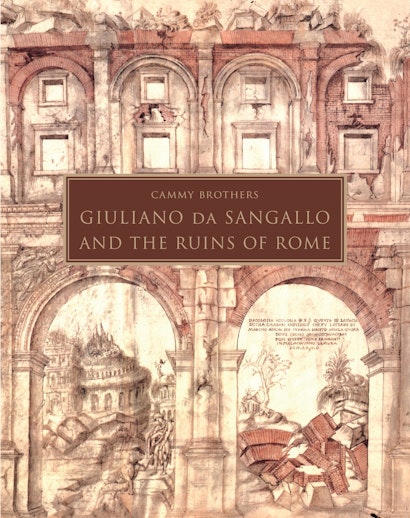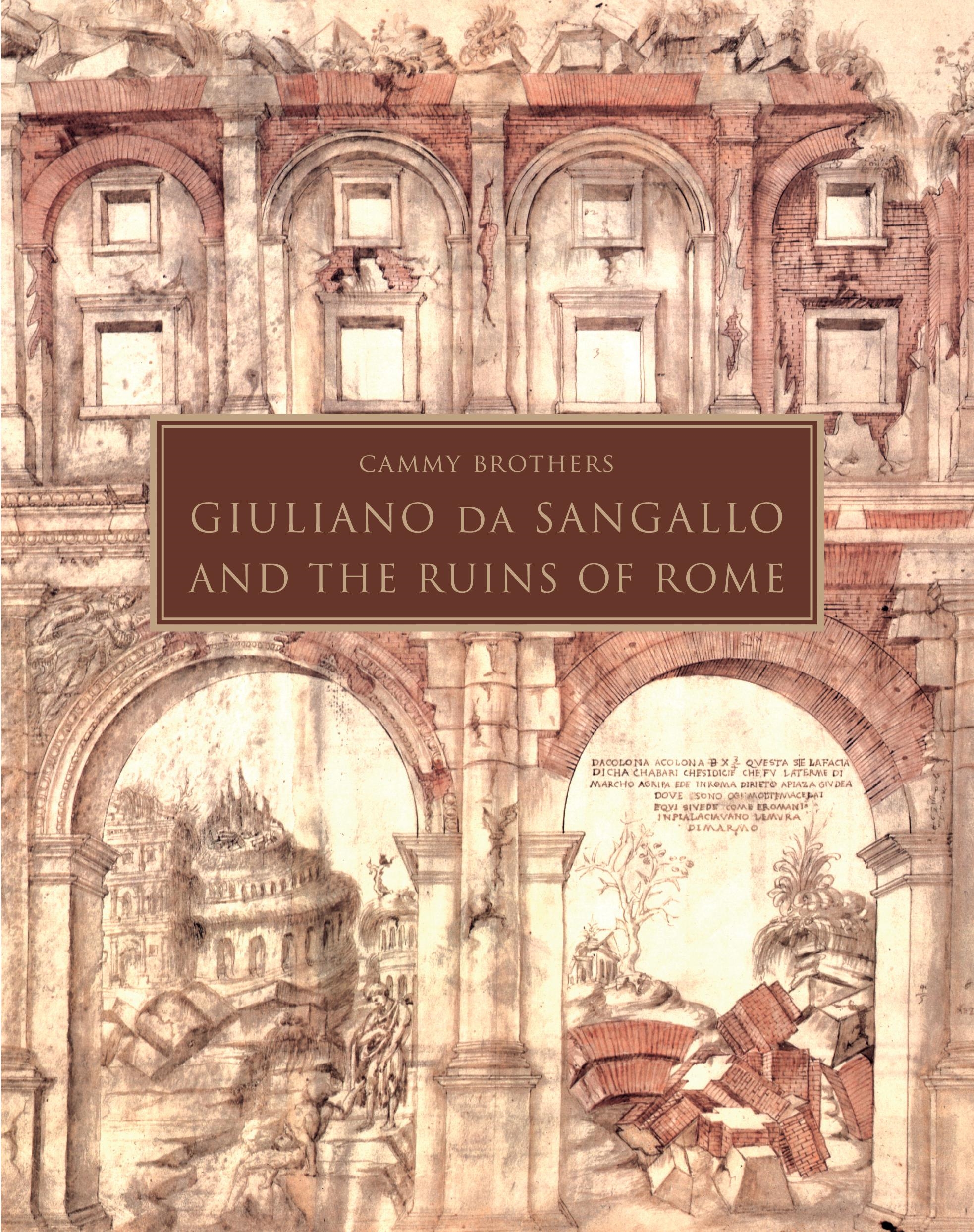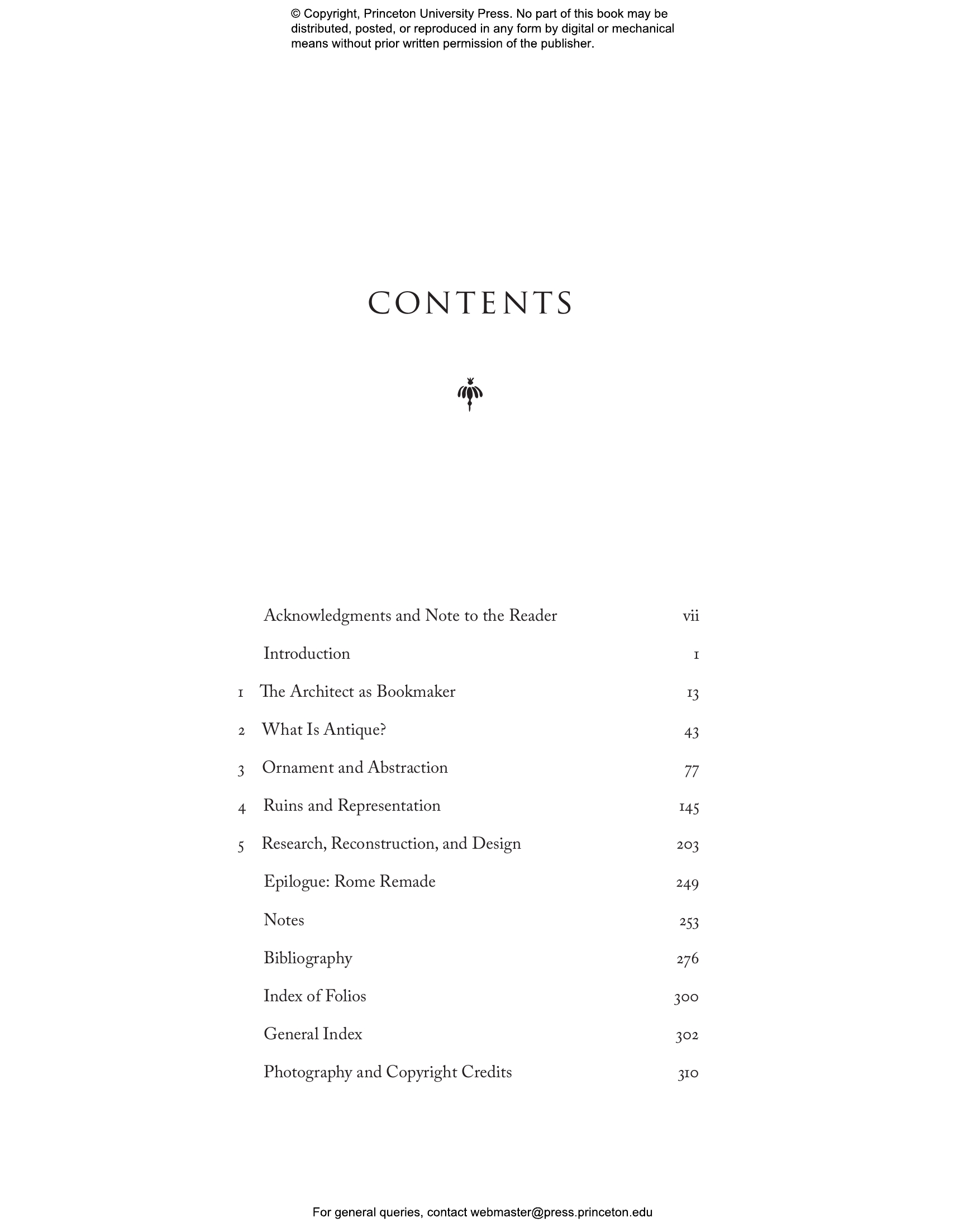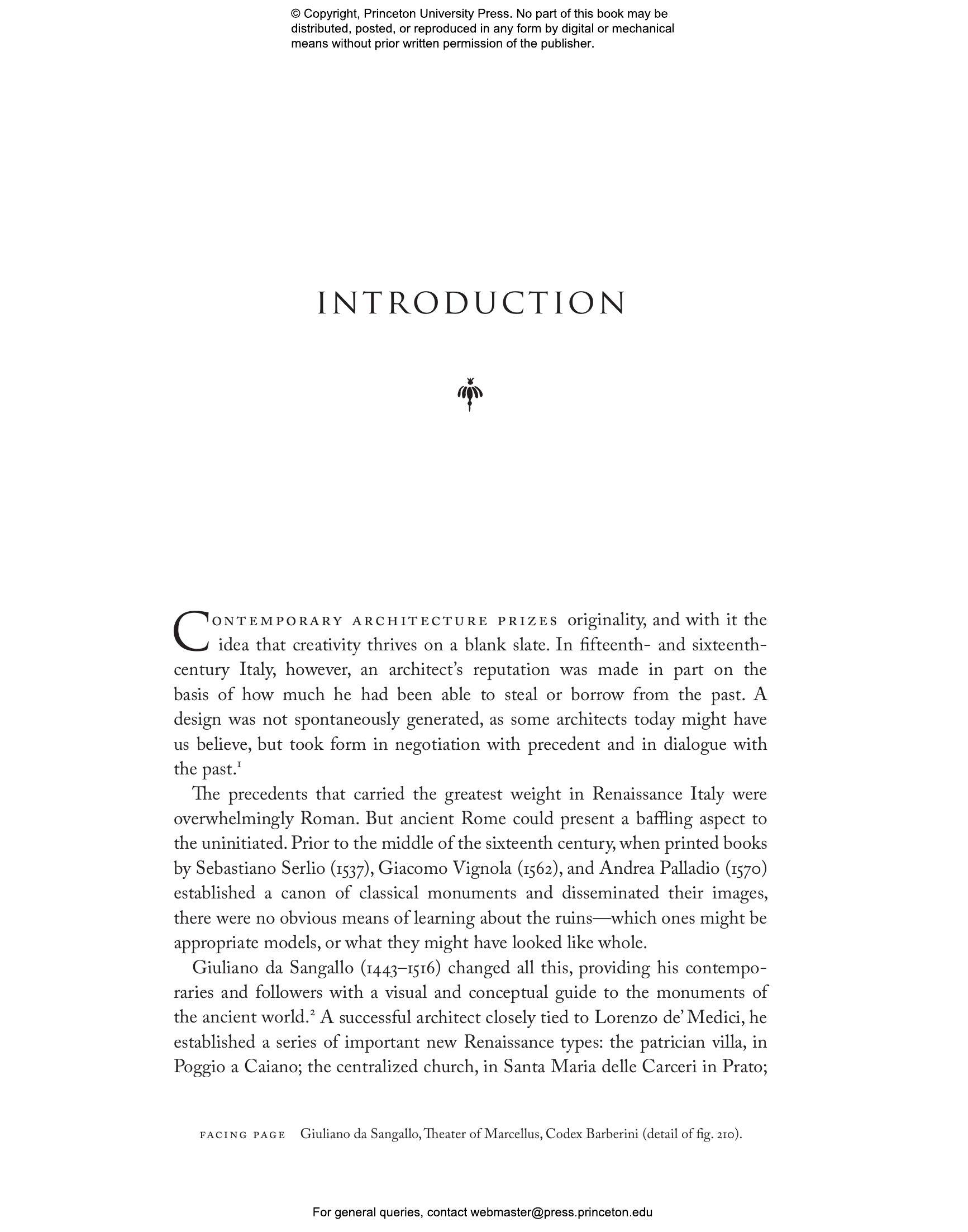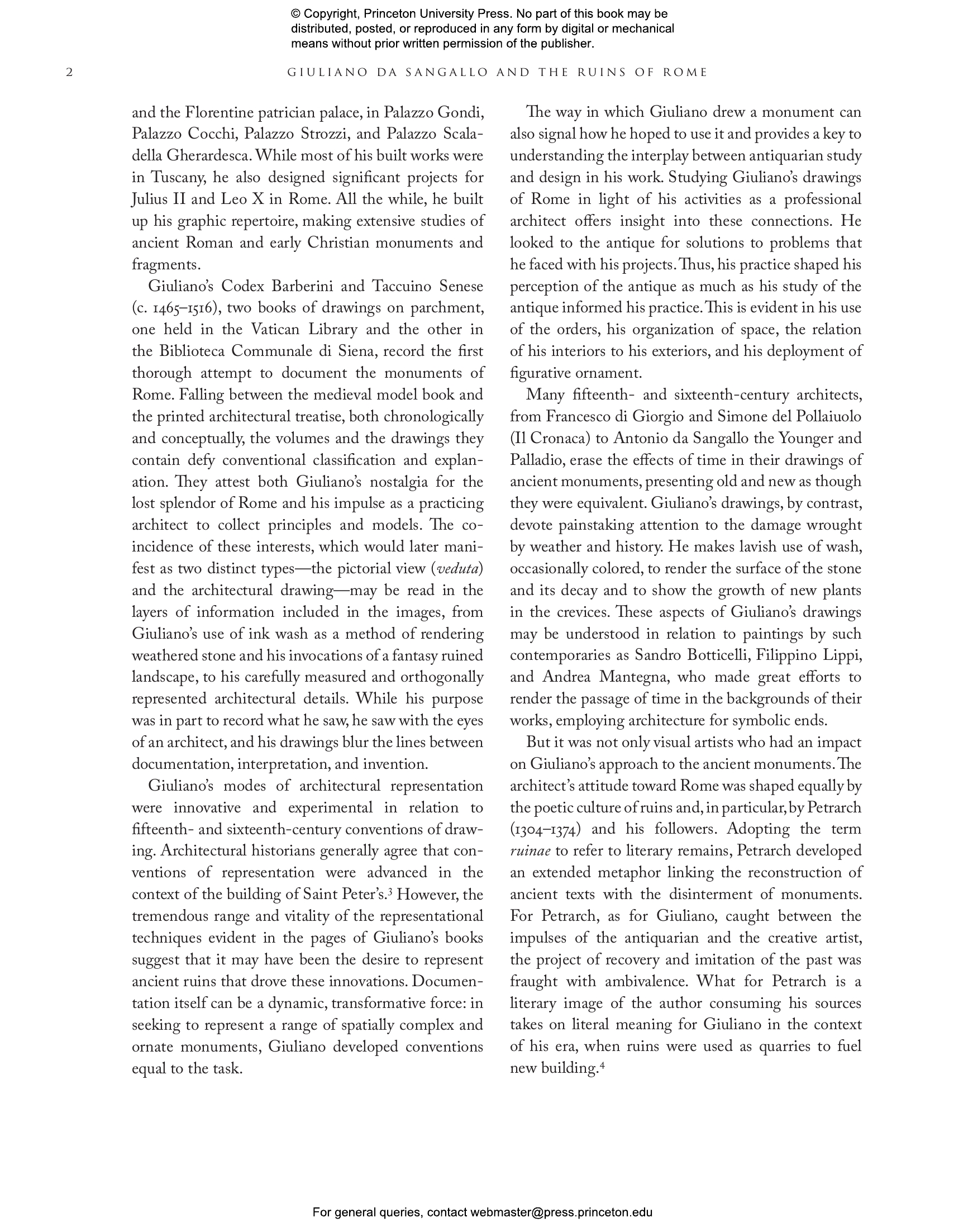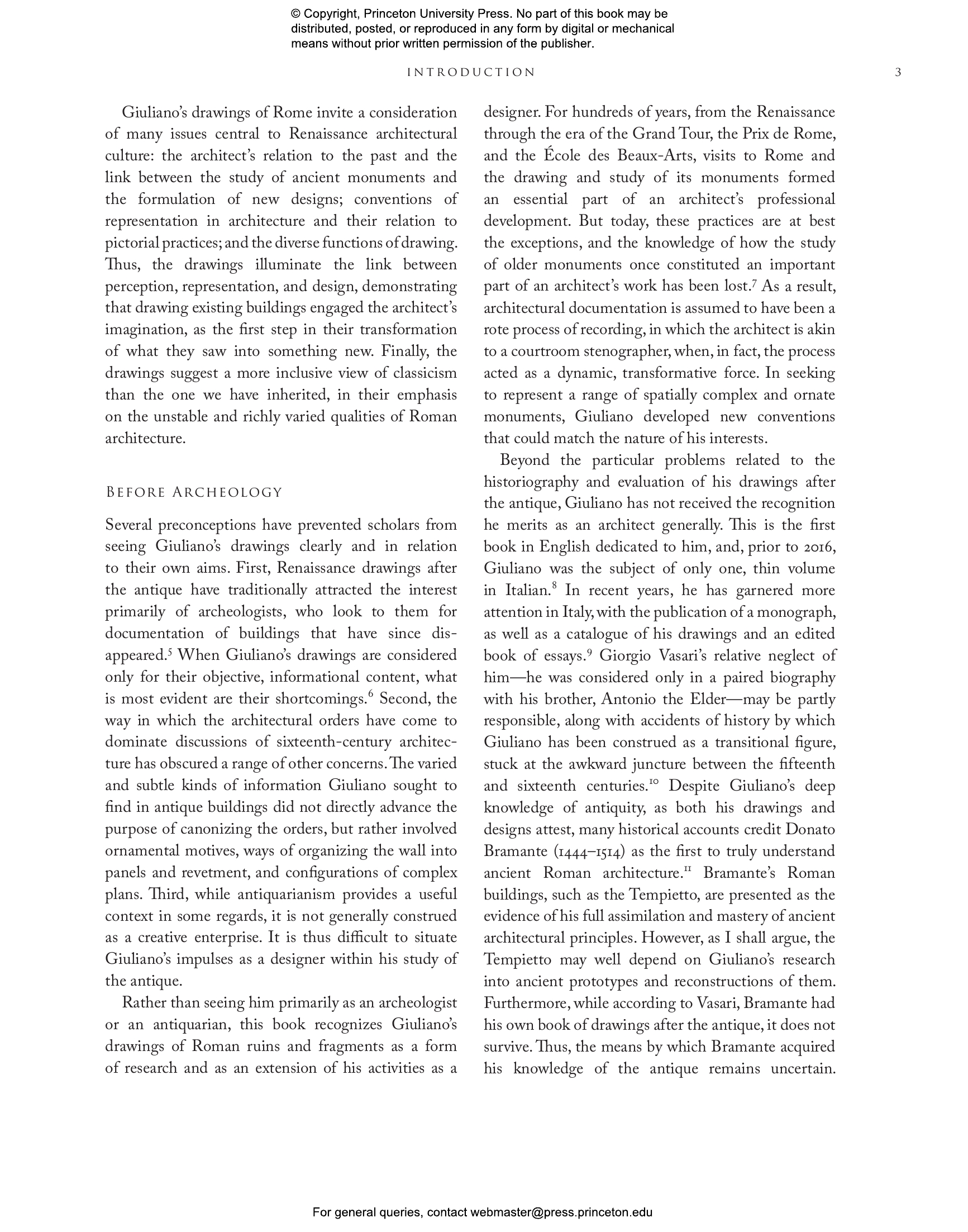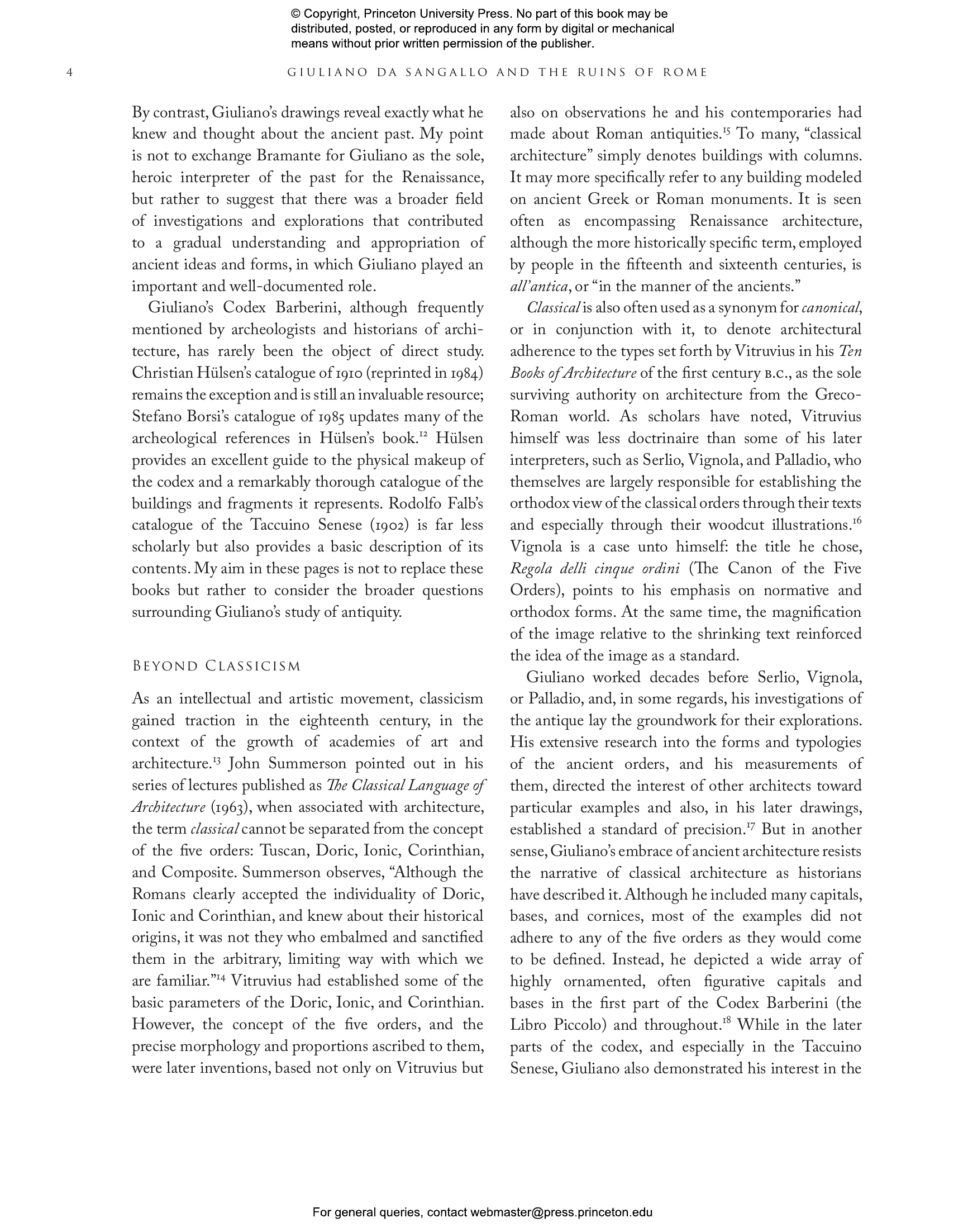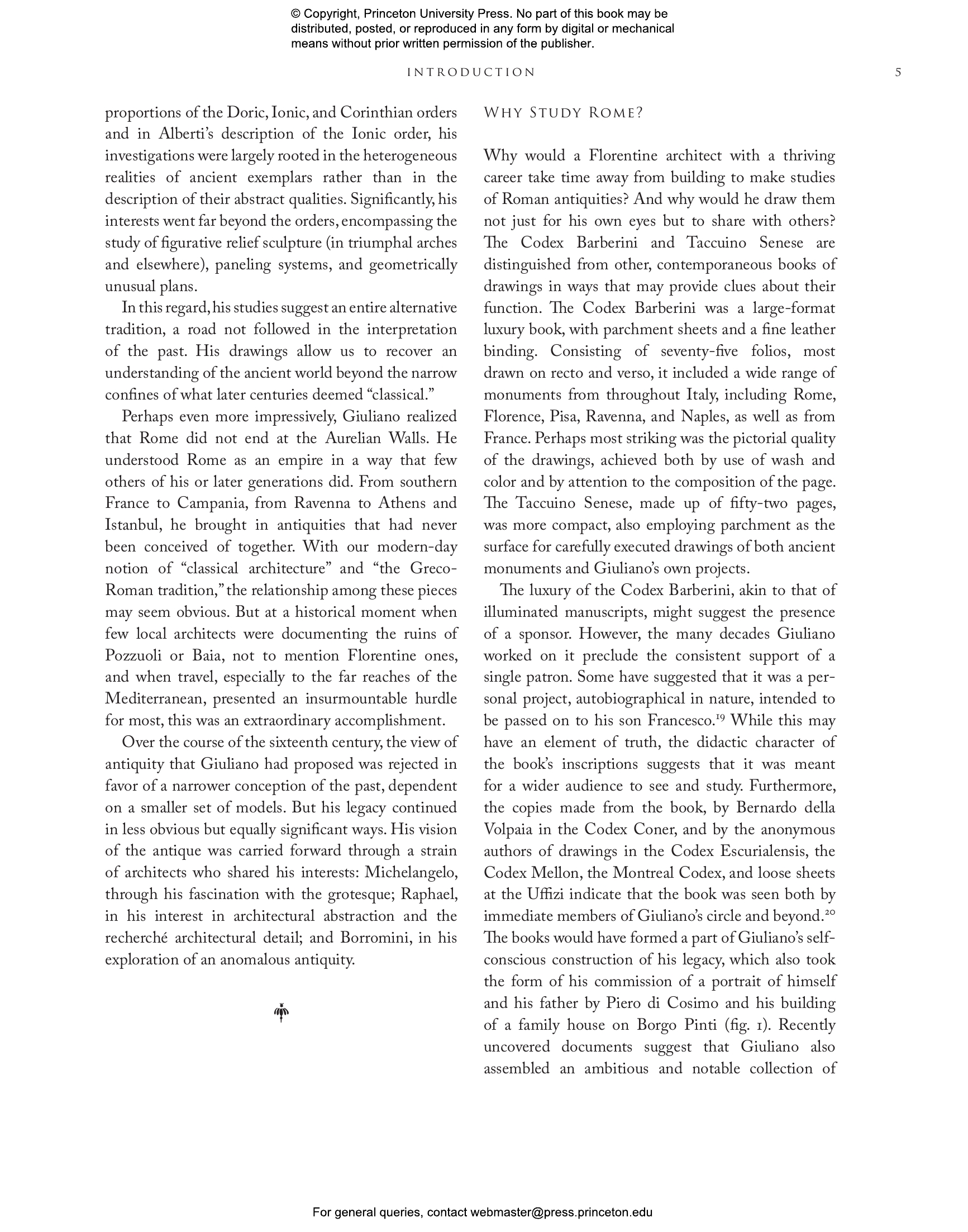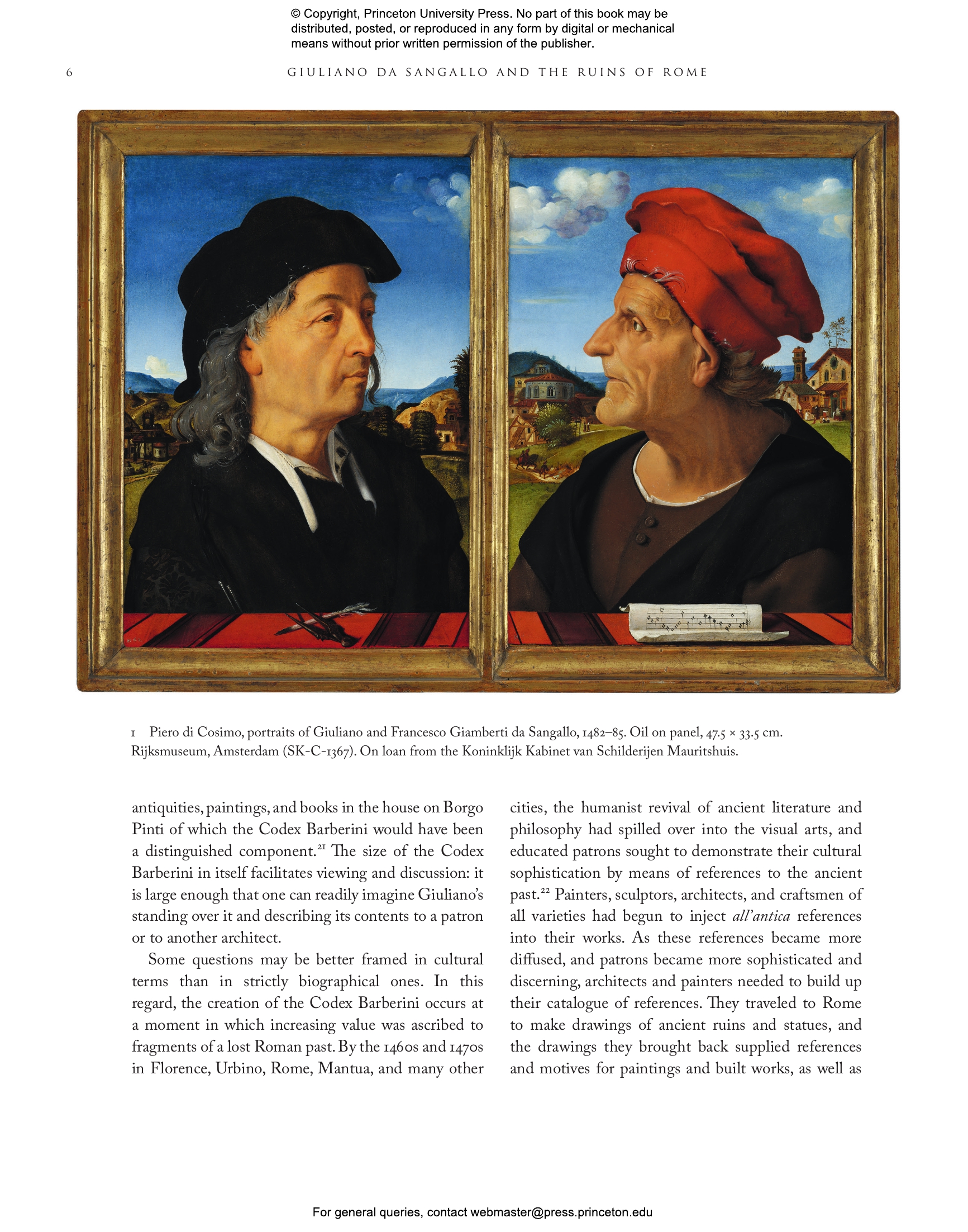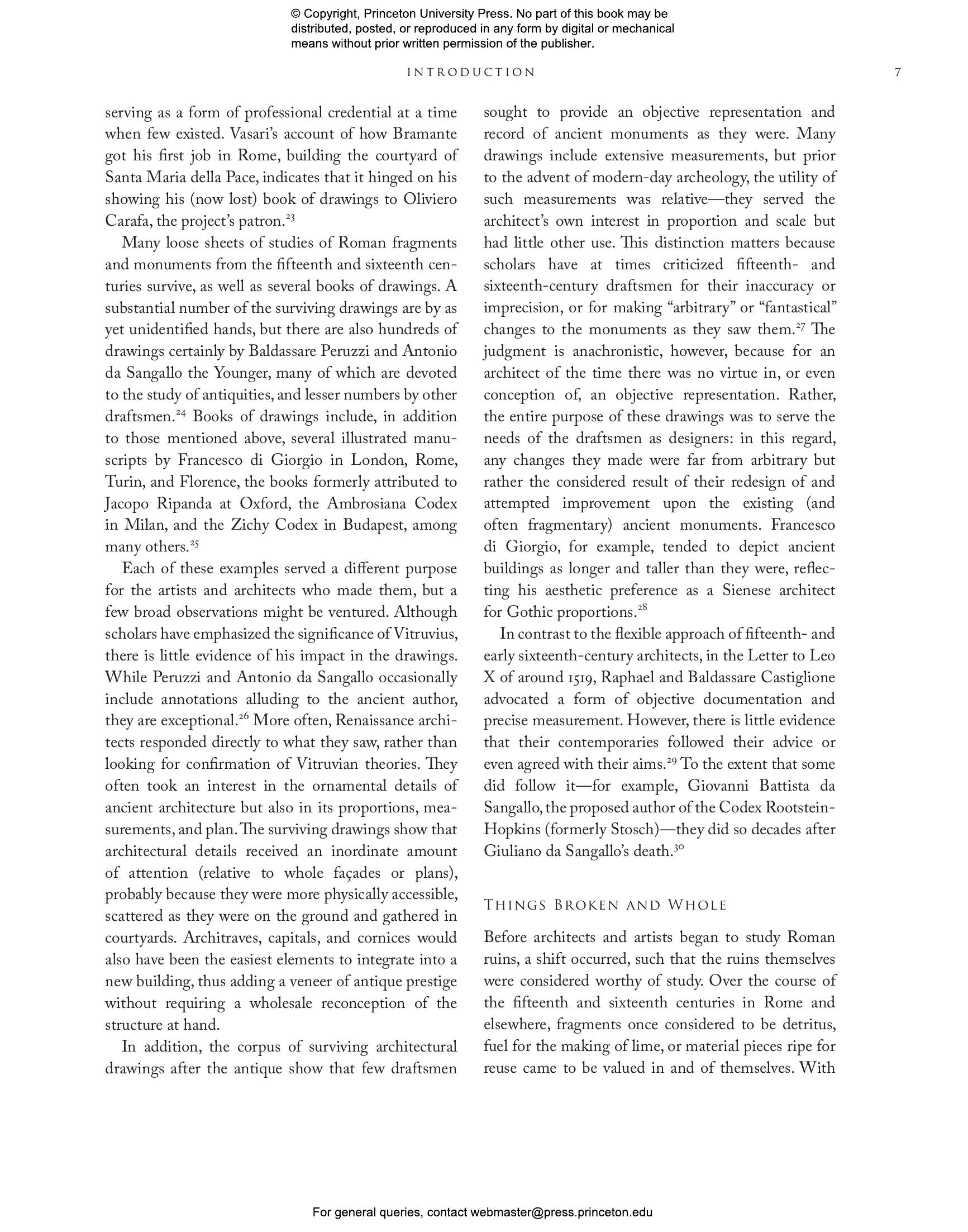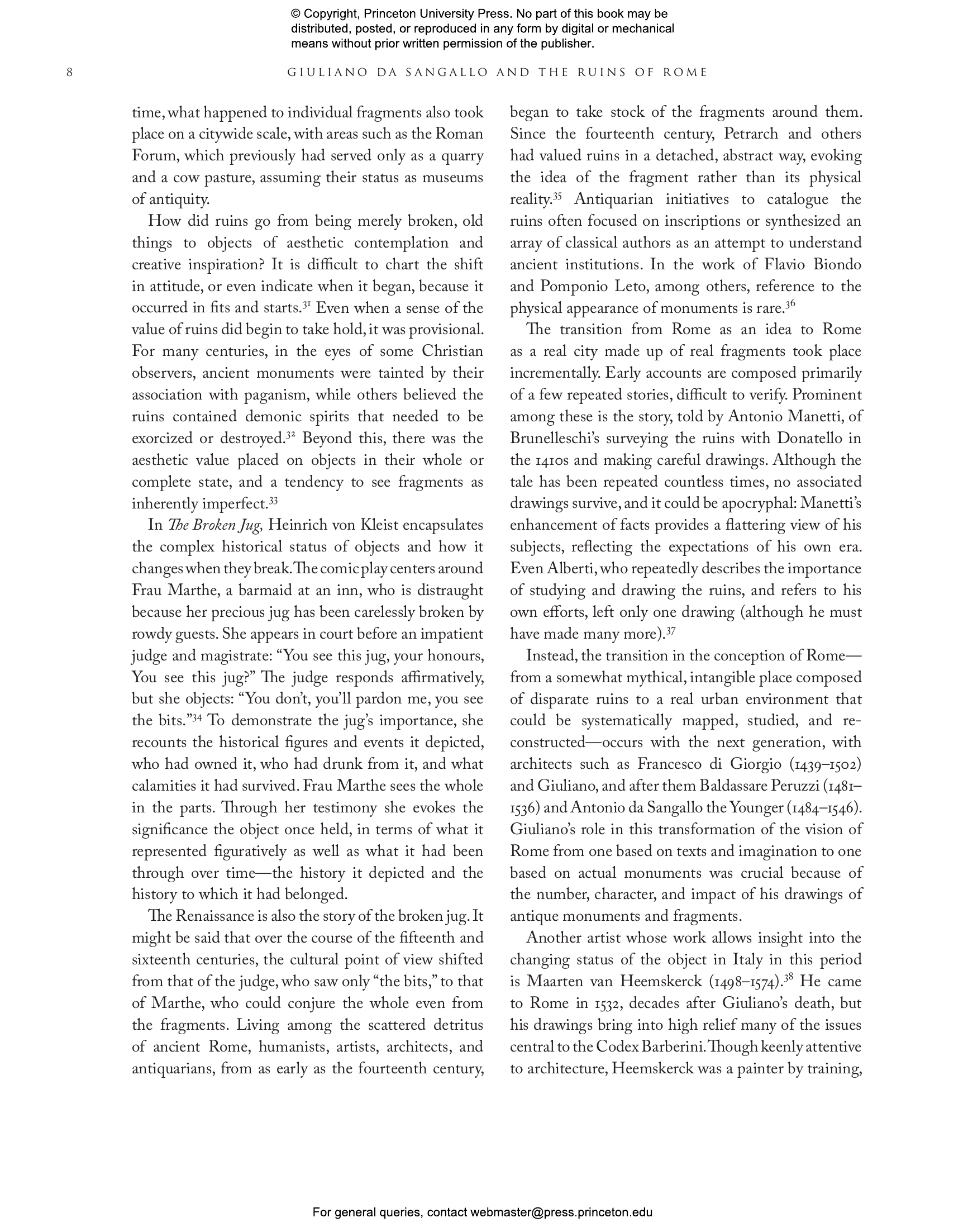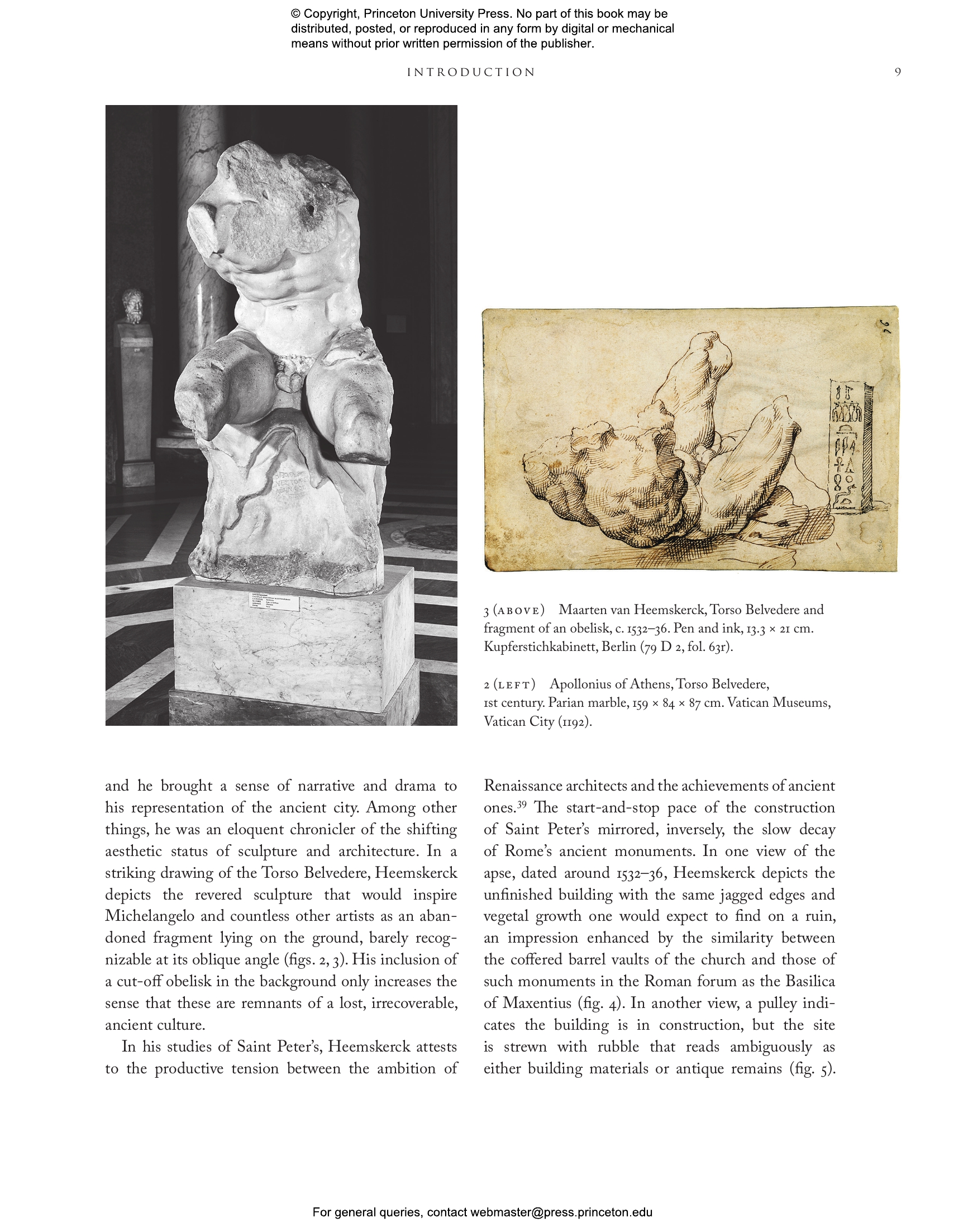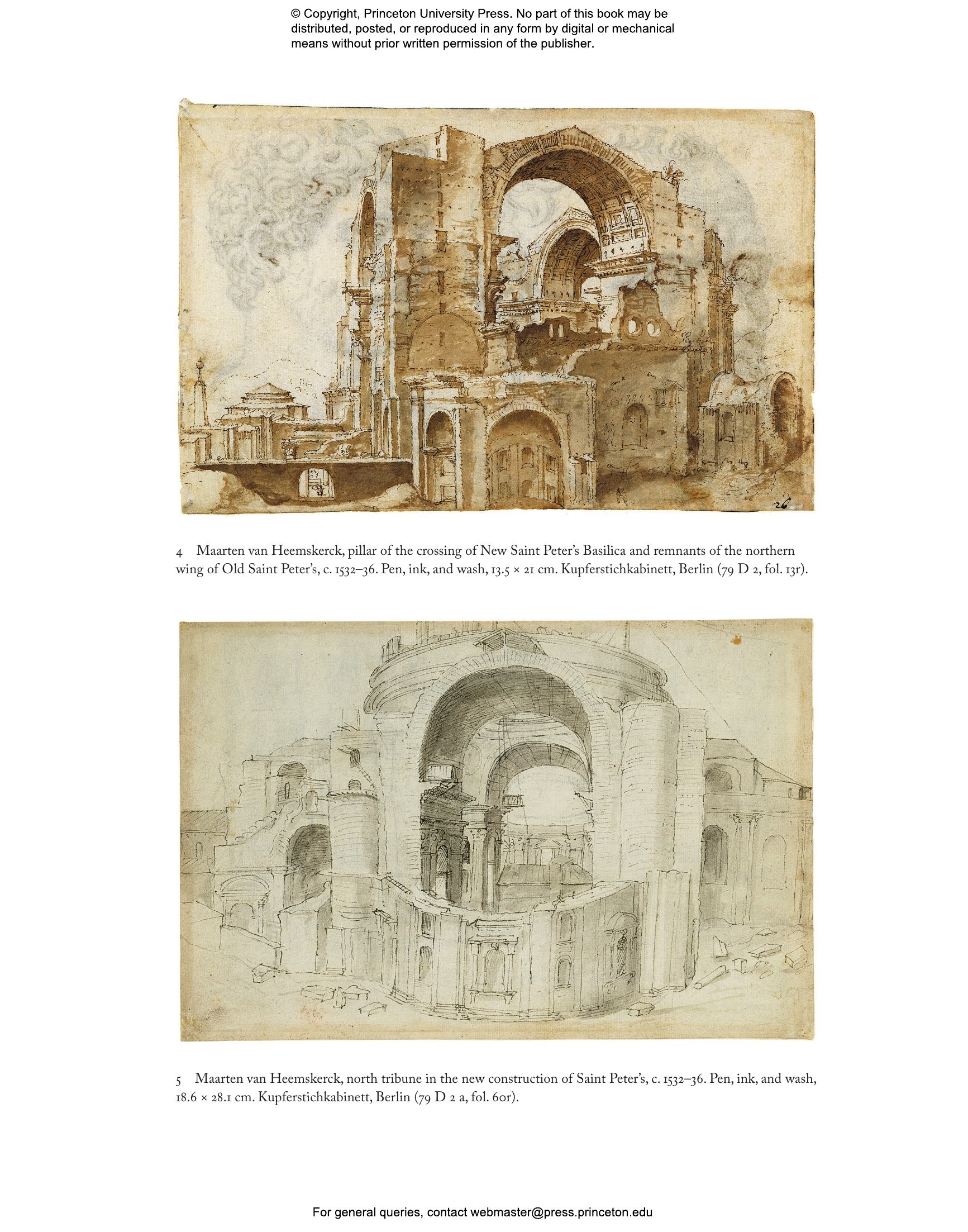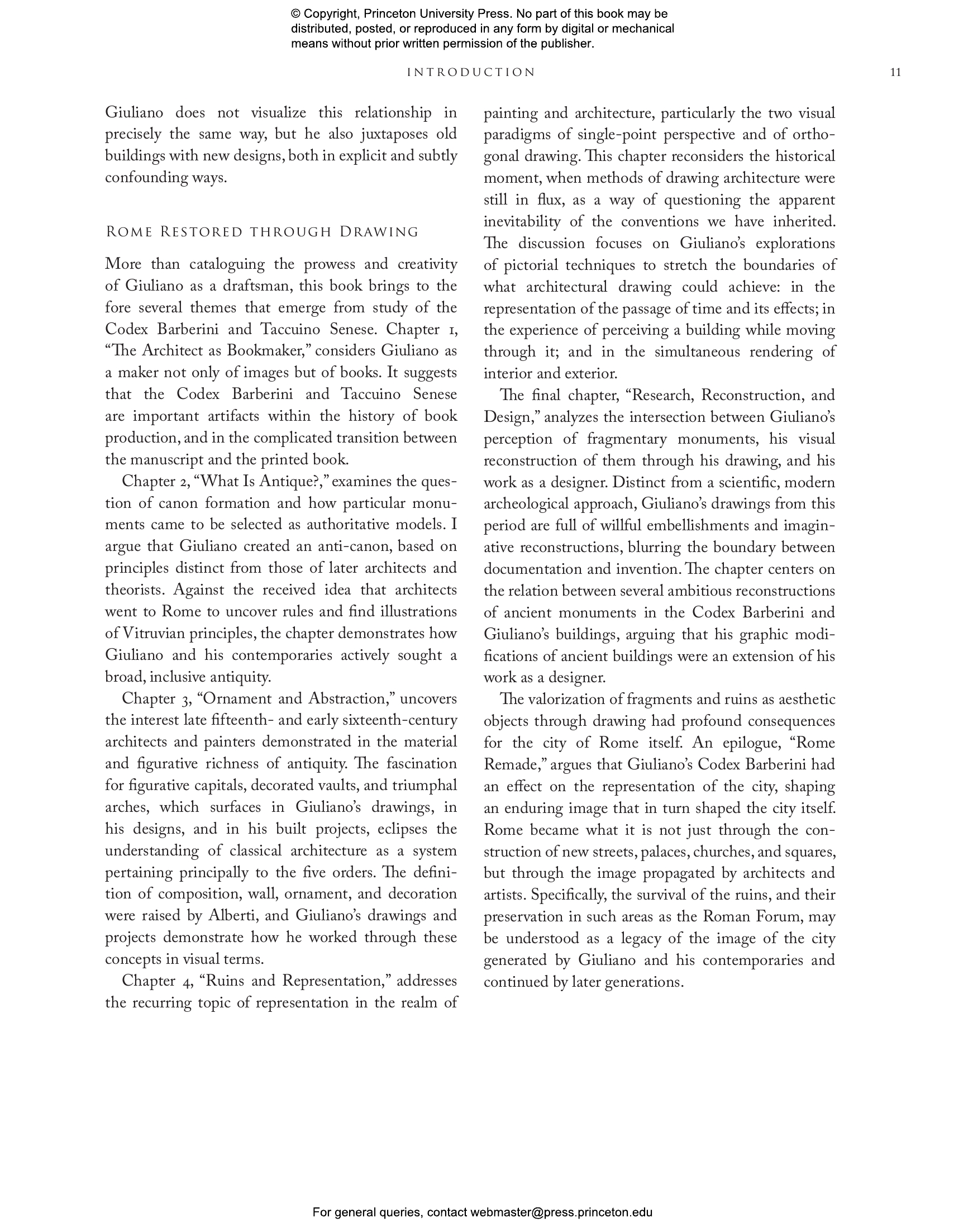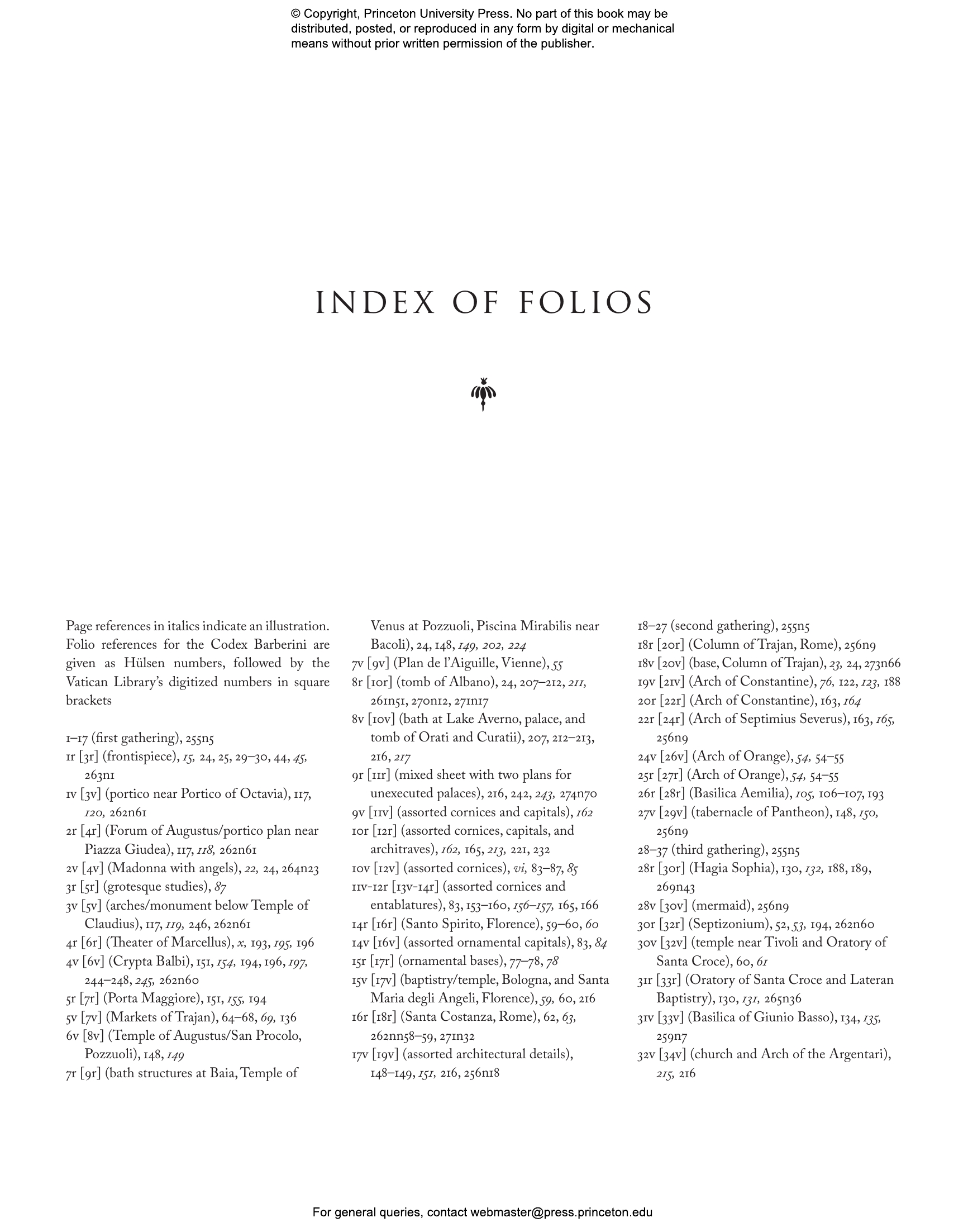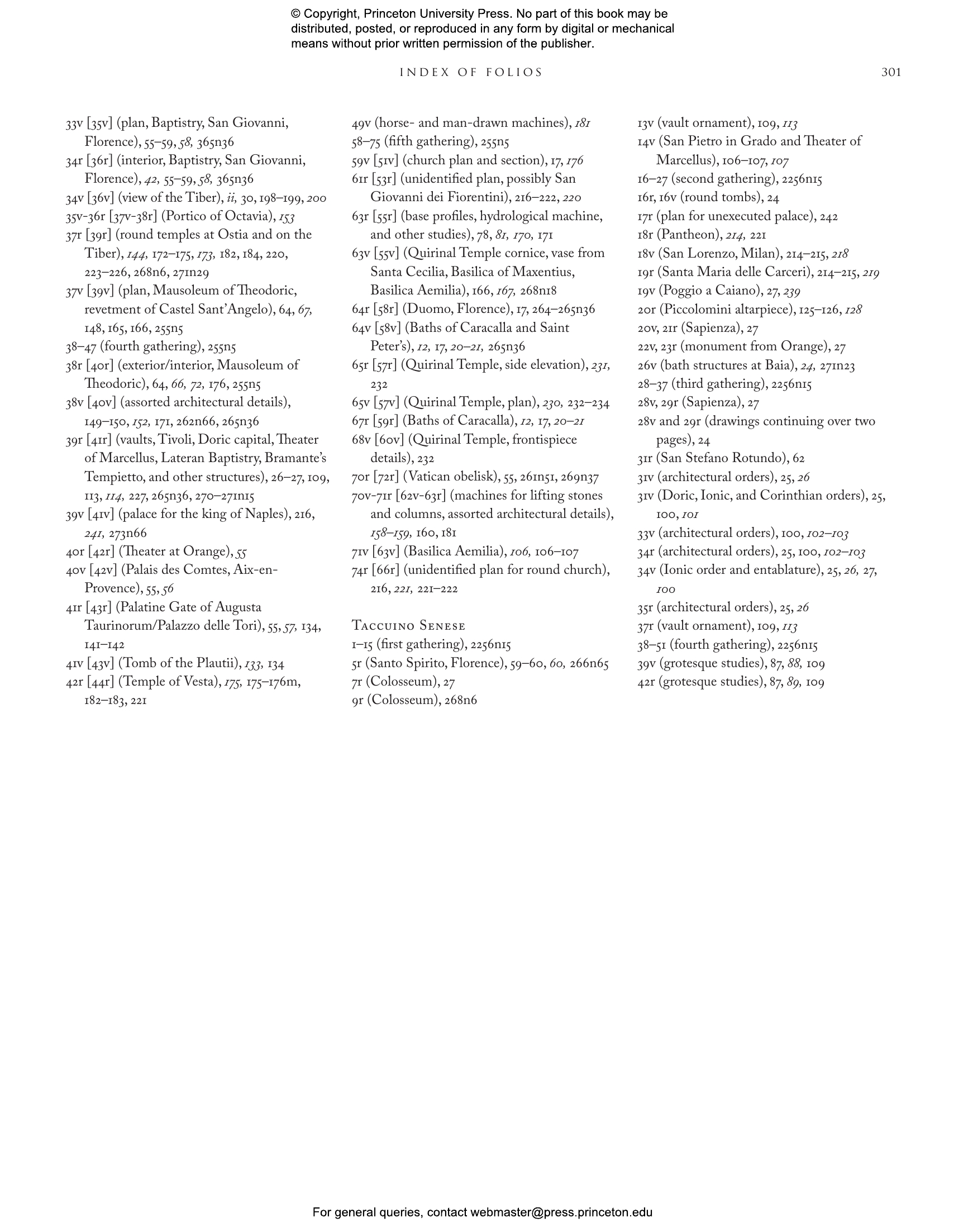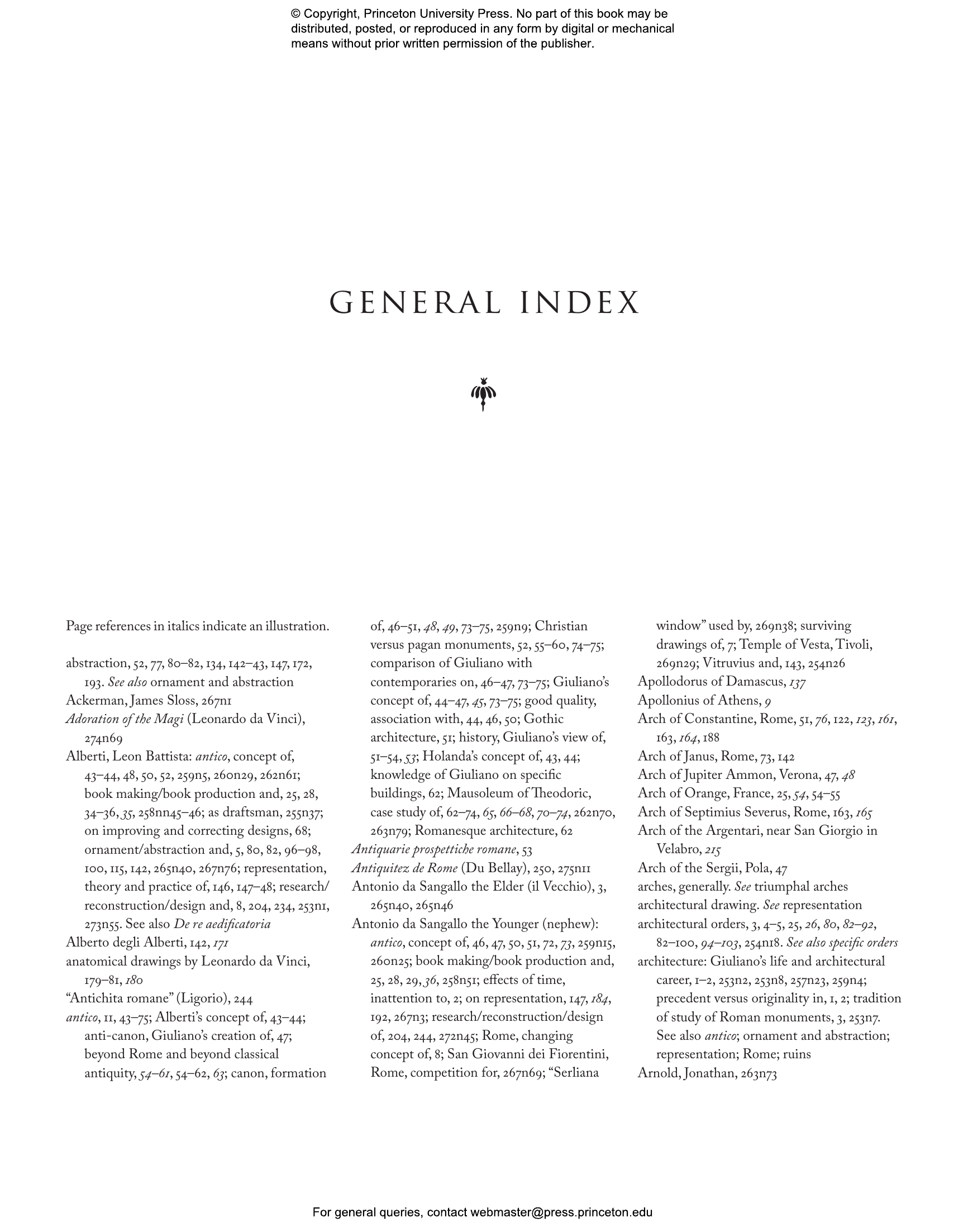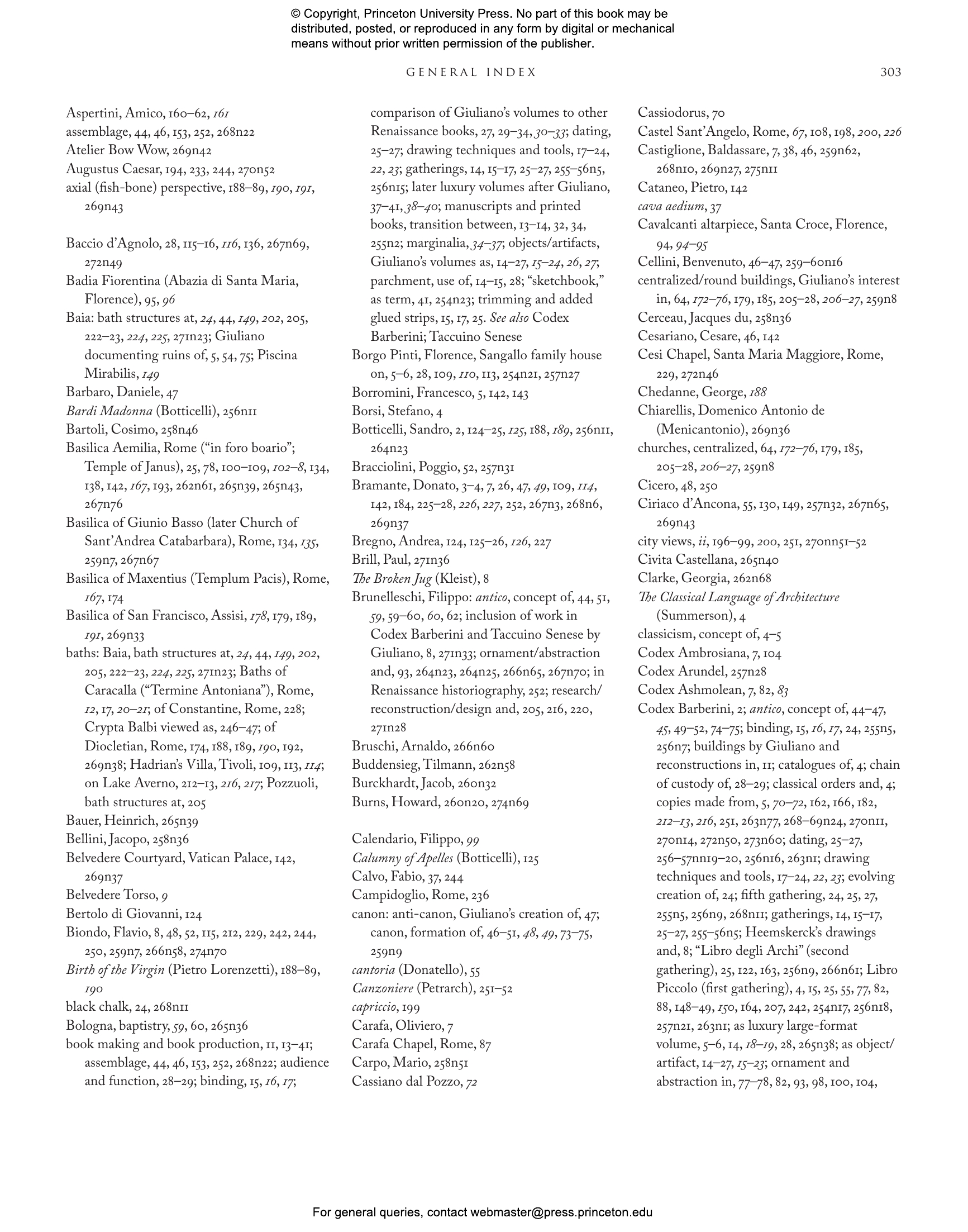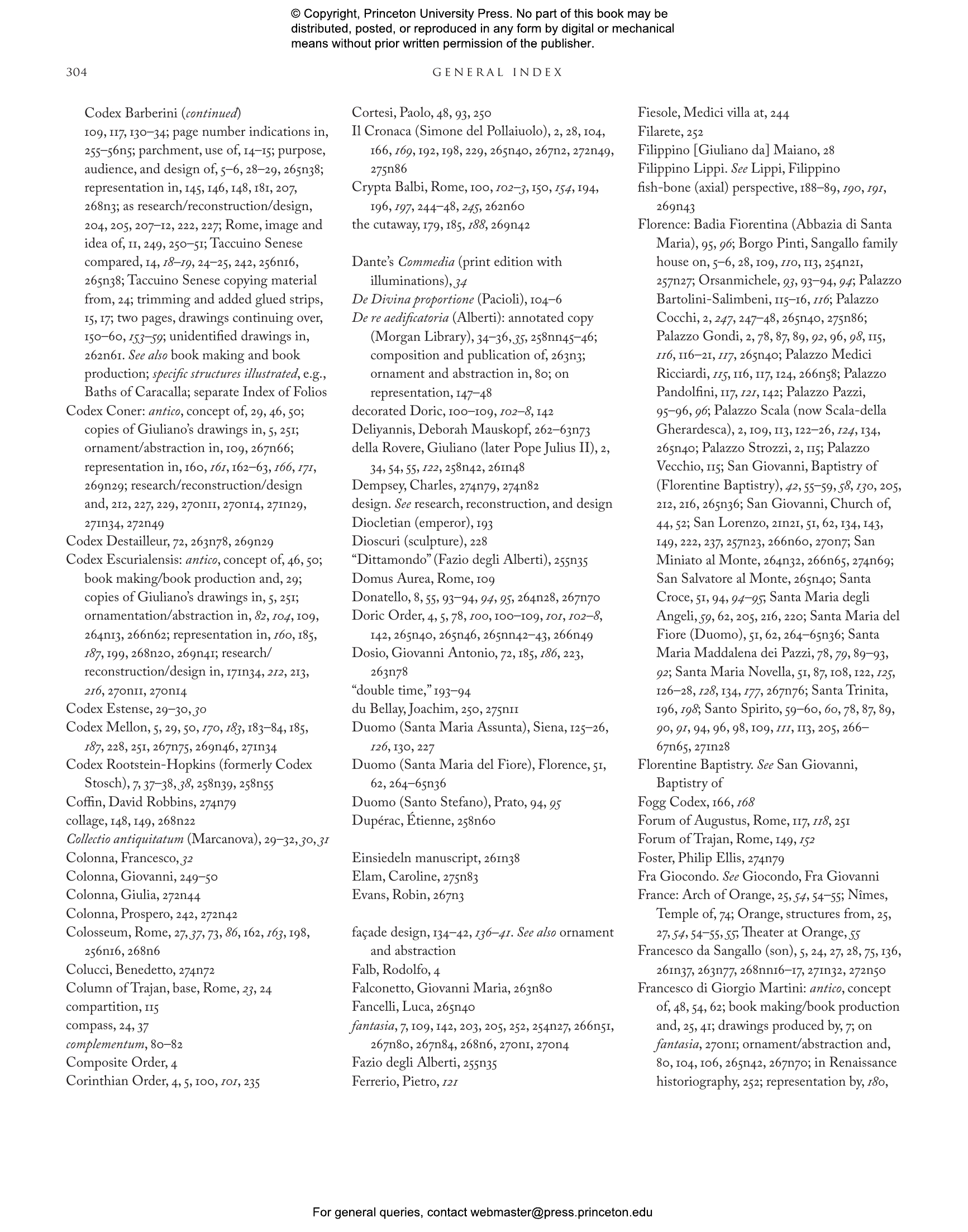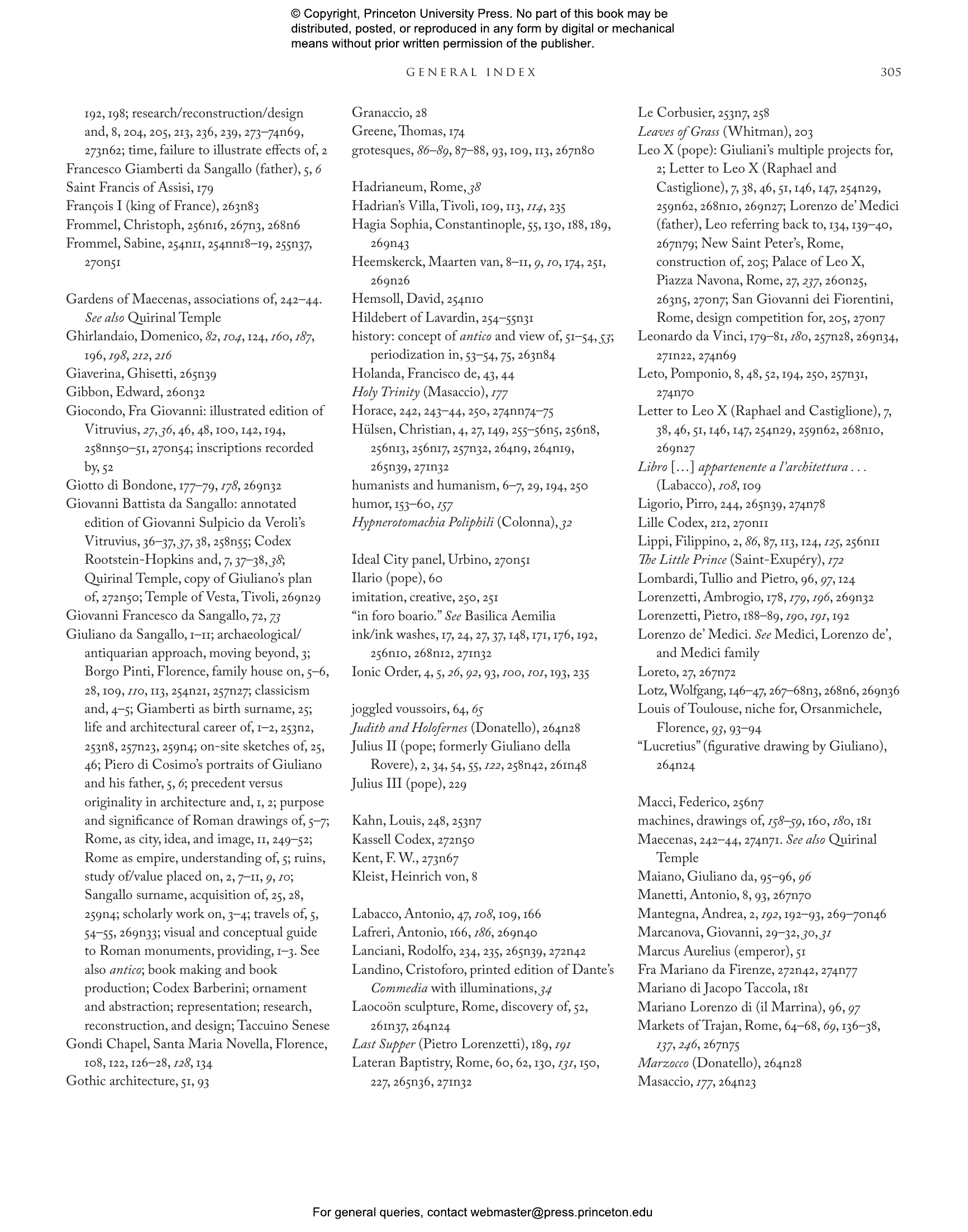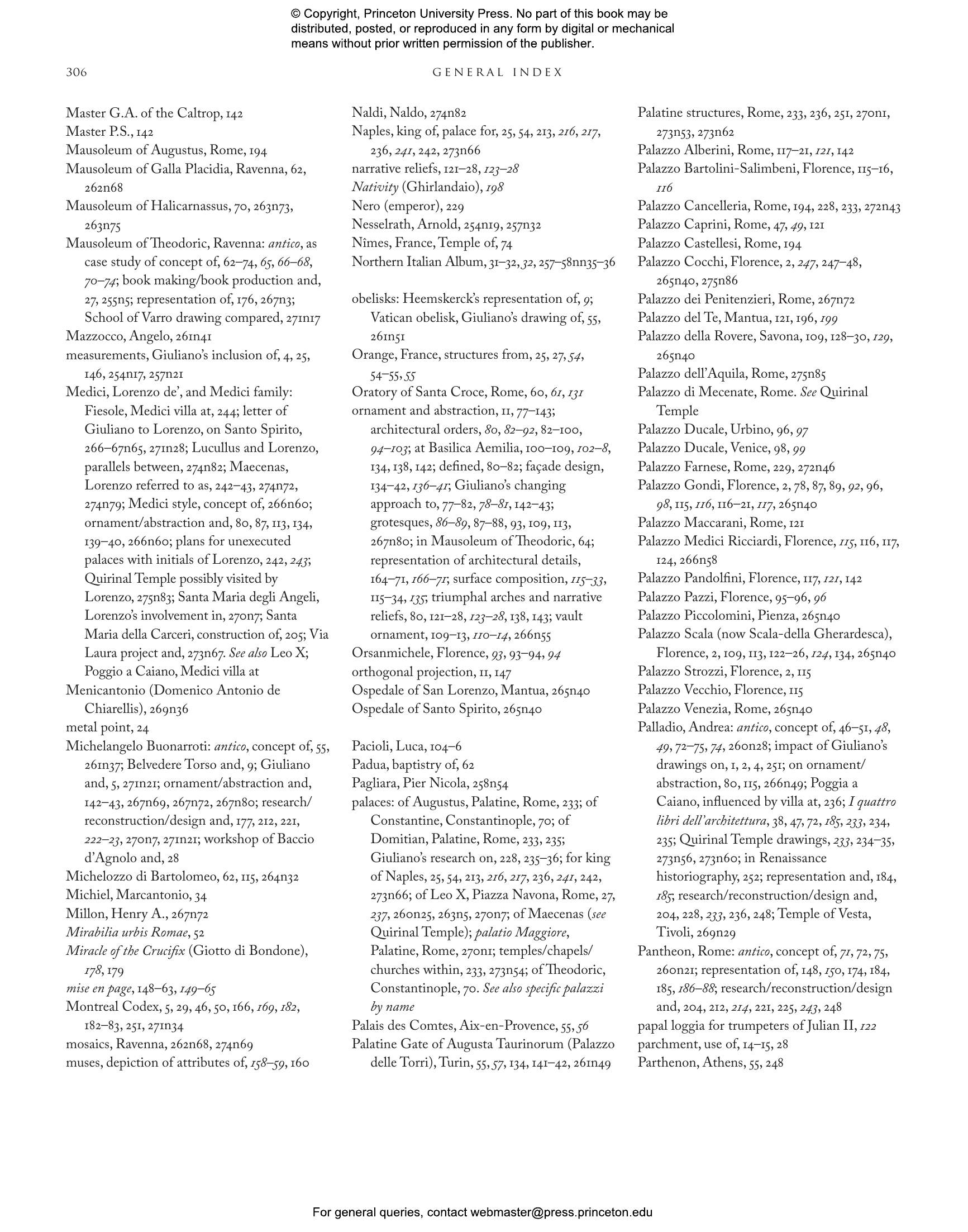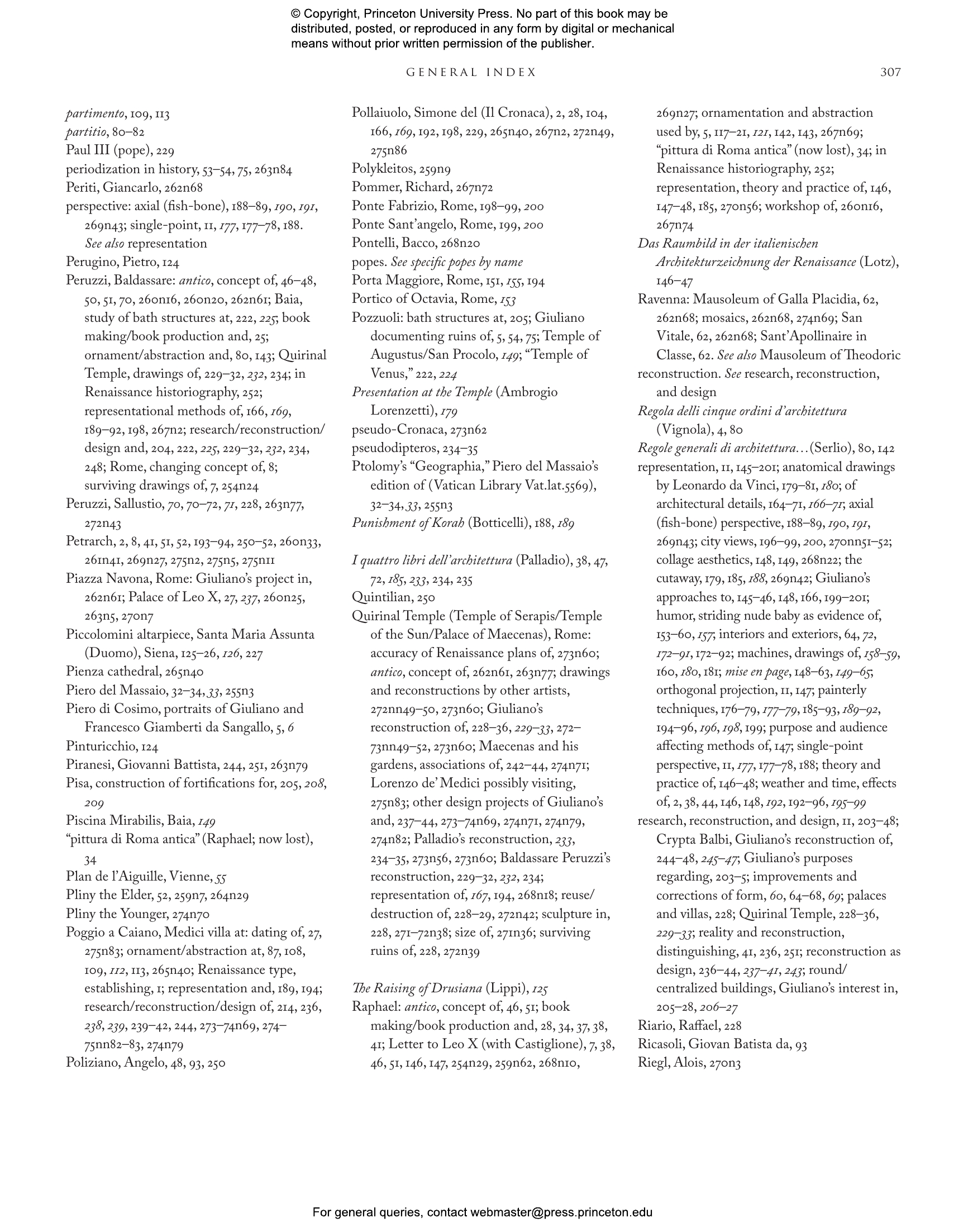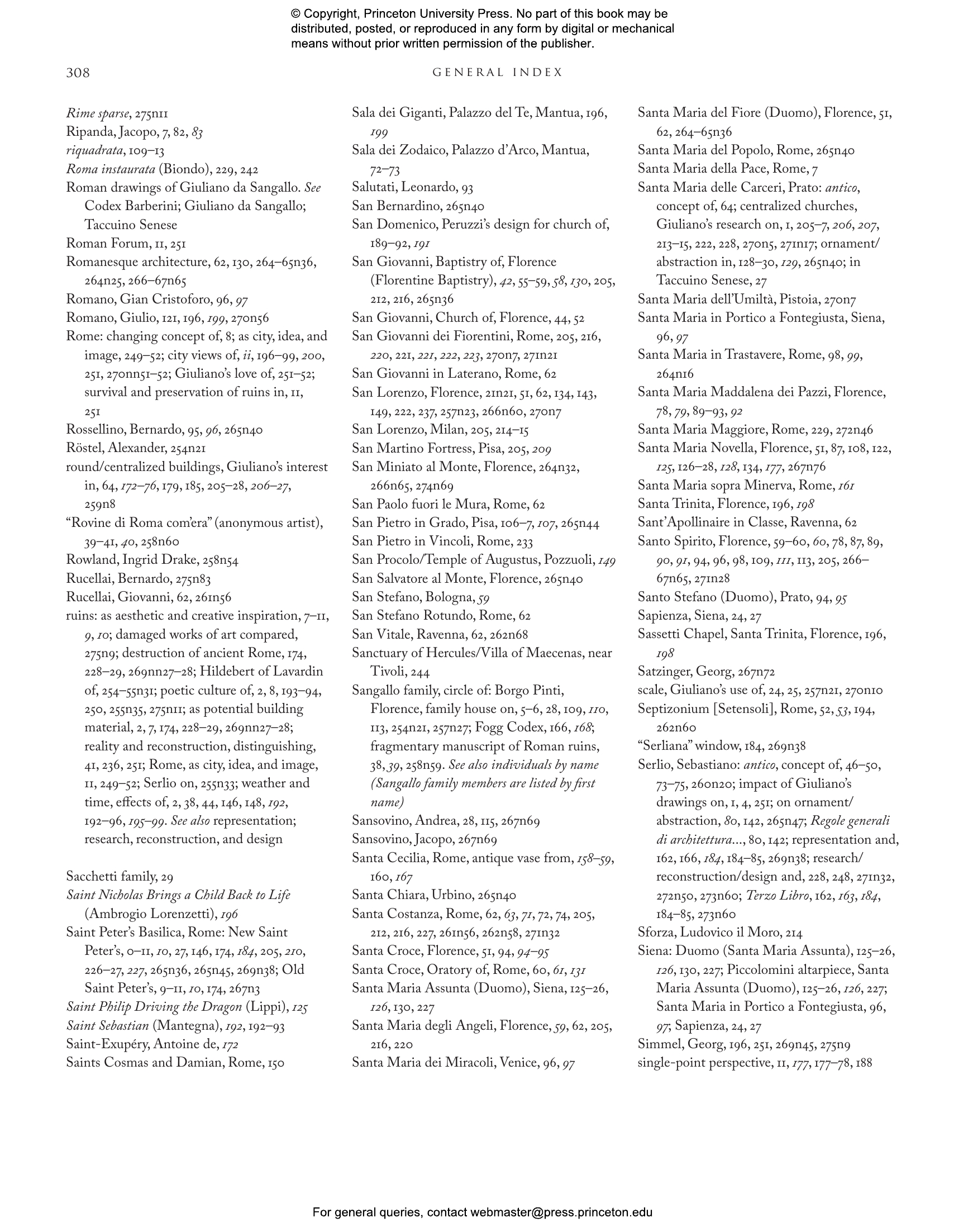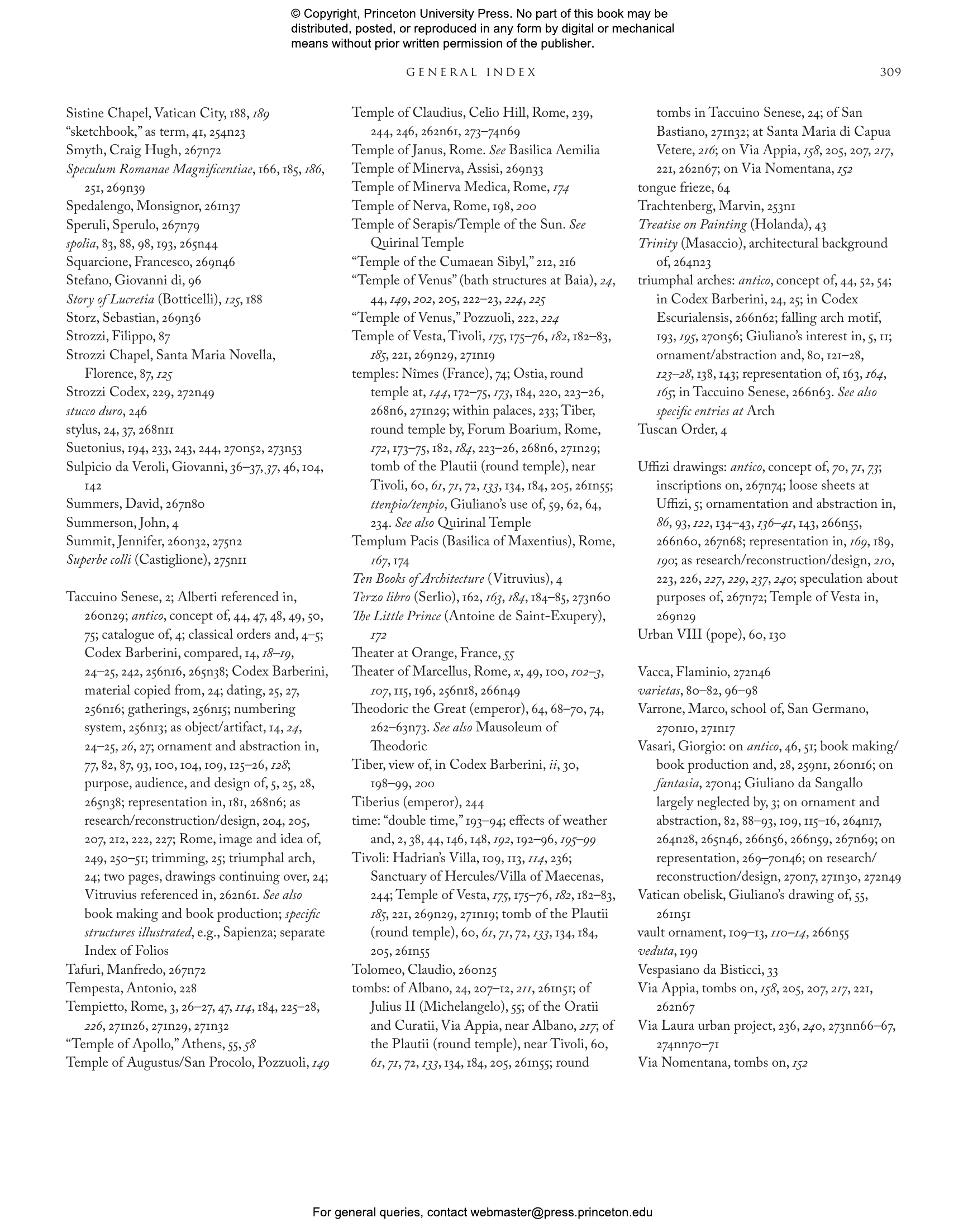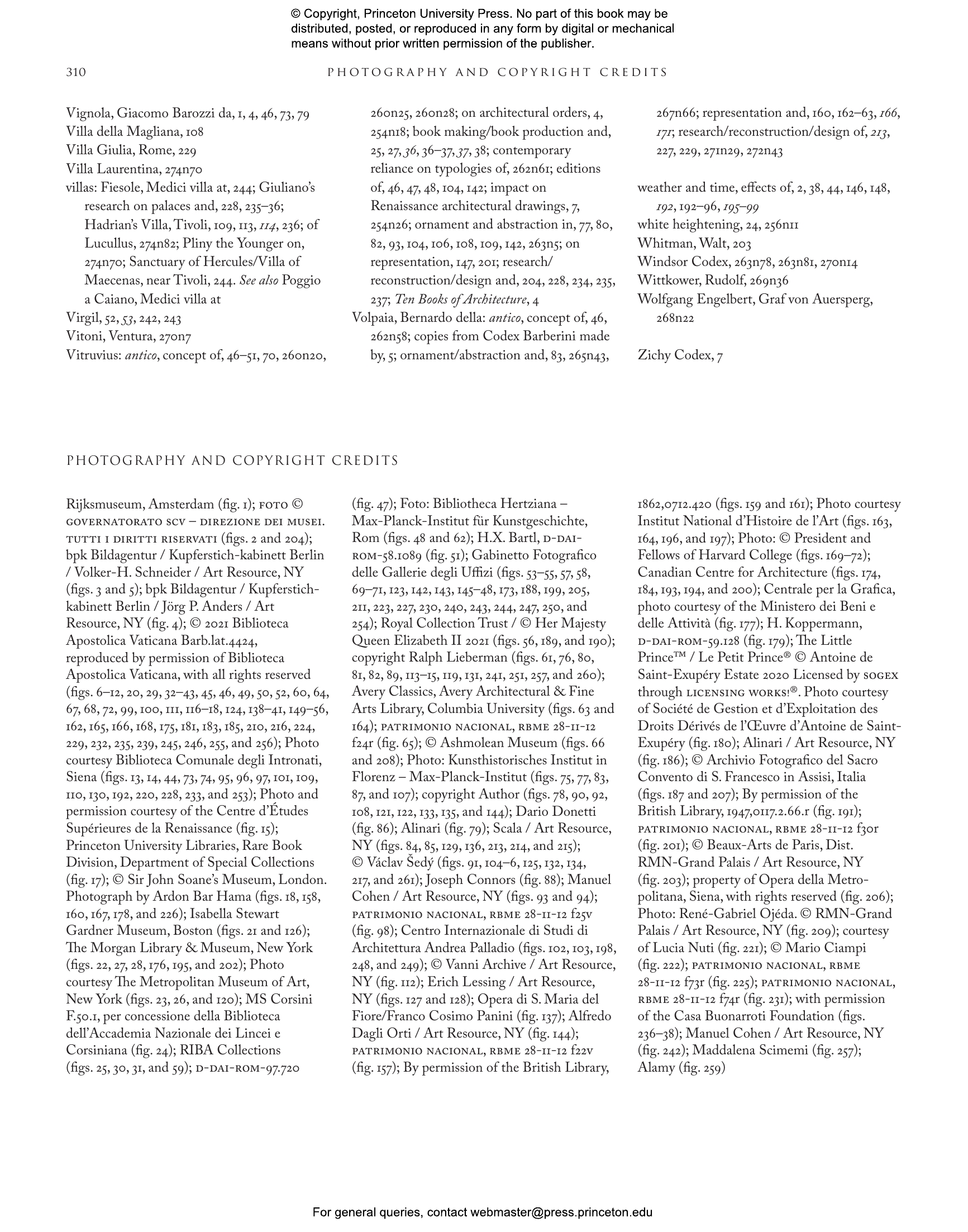Giuliano da Sangallo (1443–1516) was one of the first architects to draw the ruins and artifacts of ancient Rome in a systematic way. Cammy Brothers shows how Giuliano played a crucial role in the Renaissance recovery of antiquity, and how his work transformed the broken fragments of Rome’s past into the image of a city made whole.
Drawing new insights from the Codex Barberini and the Taccuino Senese—two exquisite collections of Giuliano’s drawings on parchment—Brothers reveals how the Florentine architect devoted enormous energy to the representation of ruins, and how his studies of Rome formed an integral part of his work as a designer. She argues that Giuliano’s inventive approach, which has often been mischaracterized as fantastical or naive, infused the architect’s craft with the sensibilities of a poet and painter. Brothers demonstrates how his drawings form the basis for a reevaluation of the meaning and method of the Renaissance study of ancient artifacts, and brings to life the transformative moment when artists and architects began to view the fragments of ancient Rome not as broken artifacts of little interest but as objects of aesthetic contemplation.
Featuring a wealth of Giuliano’s magnificent drawings, this compelling book provides an incomparable lens through which to explore essential questions about the aesthetic value, significance, and the uses of the past for today’s architects.
"A handsome new book by art and architecture historian Cammy Brothers, Giuliano da Sangallo and the Ruins of Rome helps to unravel the riddle of where Bramante got his knowledge of ancient building, and her history is a bold revision of the standard accounts. . . . This book is truly a brilliant, unprecedented scholarly achievement that should place her in the front rank of architectural historians working today."—Mark Alan Hewitt, Common Edge
"Engagingly written and richly illustrated study of Giuliano da Sangallo. . . . Brothers’s study is a welcome intervention that reminds us that. . . . [Sangallo] was integral to how the next generations . . . produced their own vision of antiquity that informed urban renewal in the baroque Eternal City and beyond."—Robert John Clines, Renaissance Studies
"[A] beautifully illustrated analysis of Sangallo's work."—Choice
"A very important and welcome contribution to architectural and art histories of the Italian Renaissance, to studies of Rome, and to the history of the book. It is synthetic and highly innovative, like Giuliano himself."—Mirka Benes, Renaissance and Reformation
"A refreshingly original contribution to the field."—David Hemsoll, Journal of the Society of Architectural Historians
"An impressive, comprehensive presentation and an eye-opening reading of the marvelous drawings, contextualized in a rich and intelligent discussion of their position within the architectural practice of Giuliano da Sangallo and the architectural theory of his time."—Maia Fabricius Hansen, Renaissance Quarterly
“In sparkling prose, Giuliano da Sangallo and the Ruins of Rome recasts the architectural accomplishments and intellectual worlds of this major Renaissance figure. Brothers reveals precisely how he interacted with the fractured remains of the ancient buildings he drew and offers a fresh vision of the broad vista of early modern architecture and art.”—Heather Hyde Minor, coauthor of Piranesi Unbound
“Compelling and lucidly written, this book offers a fresh and balanced assessment of Giuliano and his drawings, one that respects his intentions and illuminates the artistic culture in which he operated.”—John A. Pinto, author of Speaking Ruins: Piranesi, Architects, and Antiquity in Eighteenth-Century Rome
“Brothers permits us to recapture, in fine grain, how Giuliano helped to shape one of the most influential moments in Western history and culture. This is an important book and a significant contribution to the field.”—William E. Wallace, author of Michelangelo, God's Architect: The Story of His Final Years and Greatest Masterpiece
“Brothers considers the celebrated corpus of Giuliano’s drawings in a completely different way, showing how his approach blurs the lines between documentation, interpretation, and invention.”—Paul Davies, coauthor of The Paper Museum of Cassiano Dal Pozzo: Renaissance and Later Architecture and Ornament
